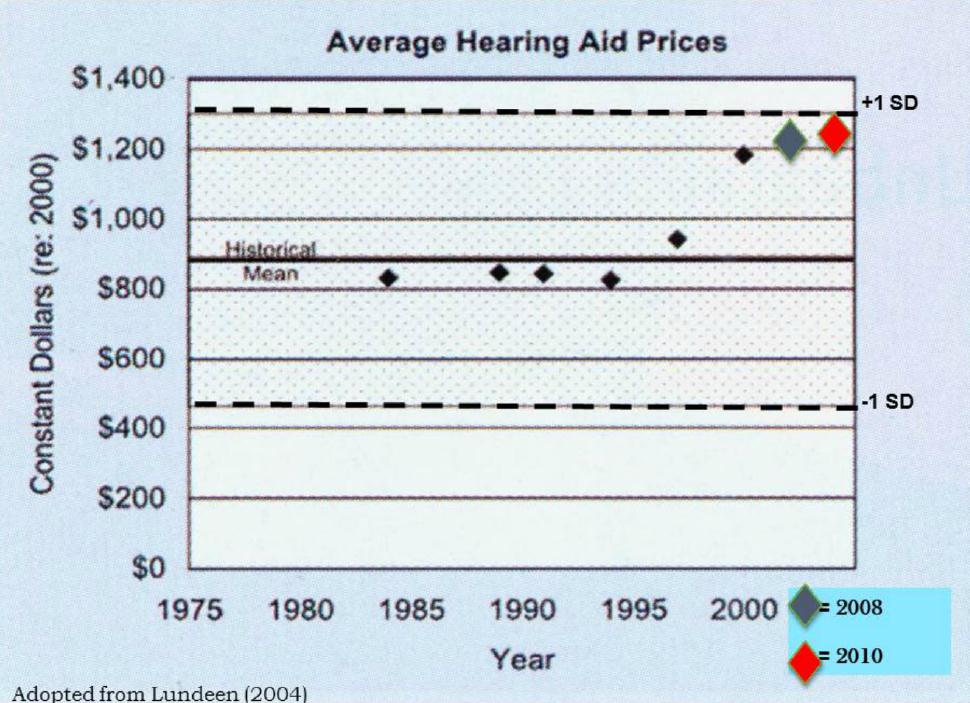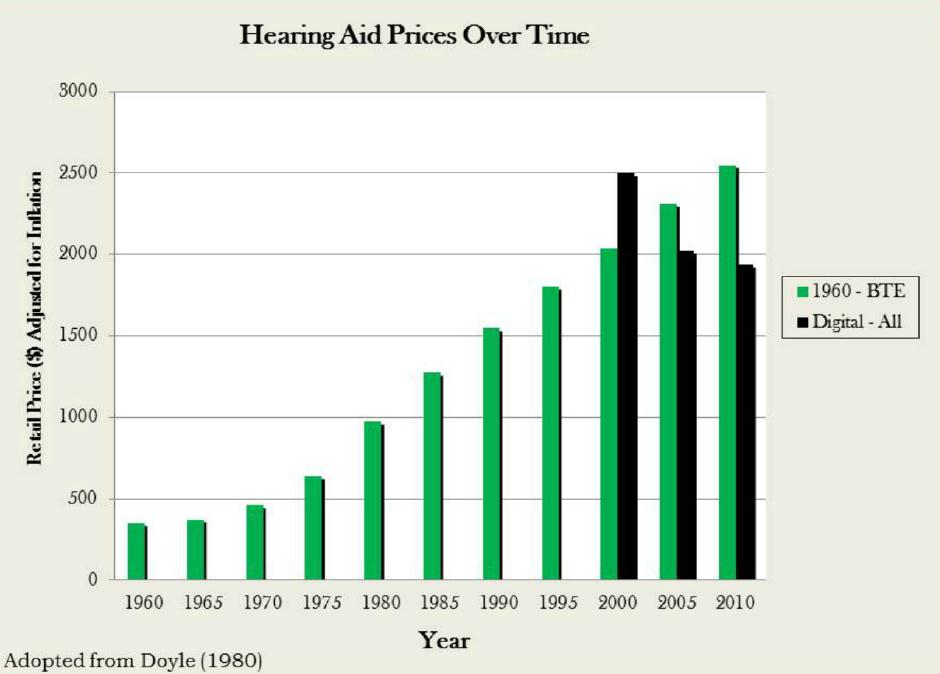This week’s Hearing View by Harvey Abrams, PhD, originally appeared on the Starkey Hearing Blogs on June 14, 2013 and was re-published on July 10, by permission, on my colleague Holly Hosford-Dunn’s blog, Hearing Economics. Because Dr. Abrams did such a great job of making the case for why hearing aids cost as much as they do, I wanted to share his perspective with readers of Hearing Views.
As with any guest-authored Hearing Views, I am not publishing this one because I agree or disagree with Dr. Abrams’s conclusions. Rather, I selected it as an outstanding example of an informed and articulate opinion on a topic of great interest to our readers. As always, civil comments from readers are welcome.
David H. Kirkwood, Editor, Hearing Views
By Harvey Abrams
My wife is an art historian. Nothing gets her angrier than to overhear some museum-goer say, “Two million dollars for that painting? I could have done that!” It takes all of her will power not to turn around and say, “Well, why don’t you?”
I have the same reaction when I hear someone remark that they can build a hearing aid for $100. Well, why don’t you? Then after you build the first one, build several million more. What’s that you say? In order to build that many hearing aids you’re going to have to buy factory space, assembly machinery, test equipment, and hire thousands of workers to research, develop, test, assemble, market, and distribute your $100 hearing aid?
While you’re at it, don’t forget to provide those technicians, scientists, and administrative personnel with health and life insurance, paid vacation and sick leave, training, computers, supplies, a safe workplace, and contribute to their social security and pensions.
Oh yes, you’ll also need to be in compliance with the myriad of municipal, state, and federal laws that regulate the manufacture and distribution of medical devices and then be prepared to repair and replace your $100 hearing aid free of charge for at least a year. Suddenly that $100 hearing aid is looking a bit more expensive, isn’t it?
Don’t forget that hearing aid manufacturers are running a business that must realize a return on investment in order to continue to operate and to continuously improve their products and develop new technology. The research and development that go into advances such as feedback management, digital noise reduction, adaptive directionality, wireless streaming, and frequency lowering don’t come cheap.
The costs I’ve reviewed so far are just those associated with the making of the hearing aid. What about all of the professional costs associated with fitting the hearing aid – a process that is unique for each patient?
NOT AN OFF-THE-SHELF DEVICE
A hearing aid is not a consumer electronic device. The proper selection and fitting of hearing aids require the skill of highly educated and trained hearing healthcare professionals. The professional services associated with the selection and fitting of hearing aids are often “bundled” with the hearing aid cost. As a result, patients are usually unaware of how much of what they are charged relates to the professional services as opposed to the device itself. Here is just a partial list of the professional services that make up that “bundle”:
- Hearing evaluation
- Hearing aid evaluation
- Counseling concerning test results and recommendations for treatment
- Earmold impression
- Probe-microphone verification
- Orientation and instructions on the use and care of the device
- Routine follow-up visits
- Unscheduled visits for adjustments
- Minor repairs
- Rehabilitation services
Each of these services takes time, specialized equipment, and supplies. And don’t forget – the audiologist is either an employee of a business or healthcare facility or a business owner who faces all the costs (space, employees, utilities, insurance, licenses, maintenance, payroll, etc.) associated with running any business. That $100 hearing aid keeps getting more expensive, doesn’t it?
Finally, our friend who can make that hearing aid for $100 might be interested to know that the cost of hearing aids, corrected for inflation, has remained relatively stable over the last 35 years. Figure 1 illustrates the average cost of a hearing aid from 1975 to 2010.{{1}}[[1]] Doyle JB Hear Instr 1980;31(9):26. [[1]] {{2}}[[2]]Amlani and Taylor Hear Rev 2012;19(05):28-37 [[2]] The historic average (based on year 2000 dollars) is approximately $900. We see a sudden increase in cost of a hearing aid in the year 2000 as a result of the introduction of digital signal processing into hearing aid technology, but that cost has remained fairly constant through 2010 and is still within 1 standard deviation of the historic mean.
Our friend may respond by saying, “But shouldn’t the price have come down? After all, the cost of other digital devices like my PC has gotten lower over time.”
Good question, but don’t forget, the hearing aid is a medical device, not a consumer electronic device and many hearing aids are custom-made. Most hearing aid manufacturers have a six-month cycle for introducing new technology. Imagine if Apple introduced a new version of the iPhone every six months? Speaking of phones, I remember paying $29.95 for a cordless phone not too long ago. How much did that iPhone 5 cost you? That said, the cost of digital hearing aids has decreased when compared to the inflation-corrected price of a hearing aid in 1960 (Fig. 2).{{3}}[[3]] Lundeen C. Hear Rev. 2004;11(10):18-19. [[3]]
It’s certainly possible that factors like the Internet and direct-to-consumer sales may change the price structure of hearing aids. For now, however, the extraordinary sophistication and complex technology that go into those small devices and the impact they have on the quality of life of individuals with hearing loss and their families make hearing aids a real bargain.
Harvey Abrams, PhD, is the Director of Audiology Research at Starkey Laboratories. Previously, Dr. Abrams served in clinical, research, and administrative capacities with the Department of Veterans Affairs and the Department of Defense. His research has focused on treatment efficacy and improved quality of life associated with audiologic intervention.









